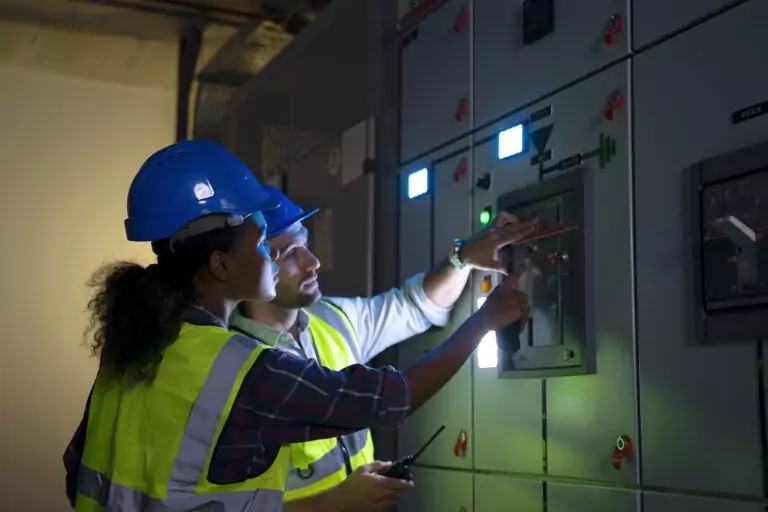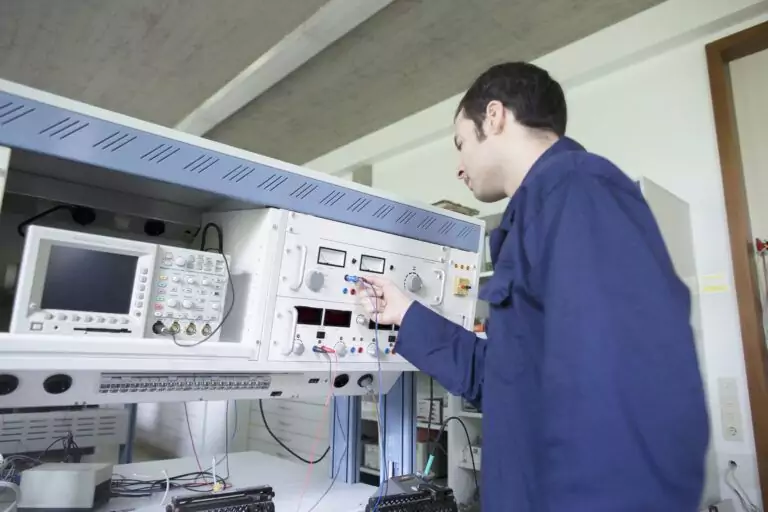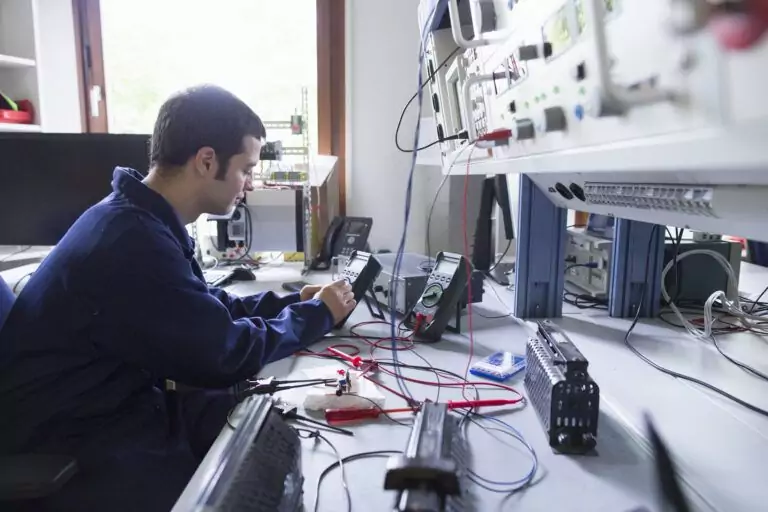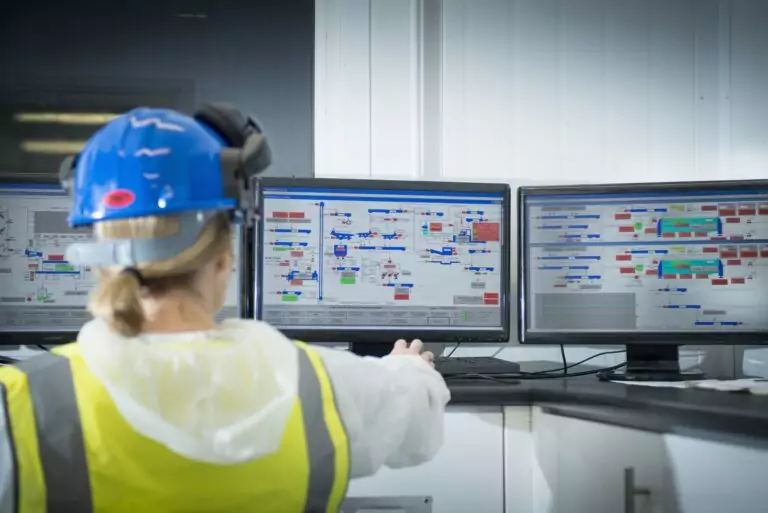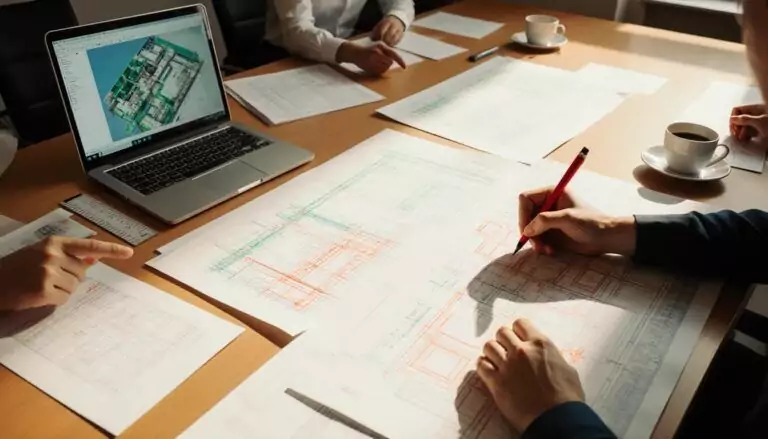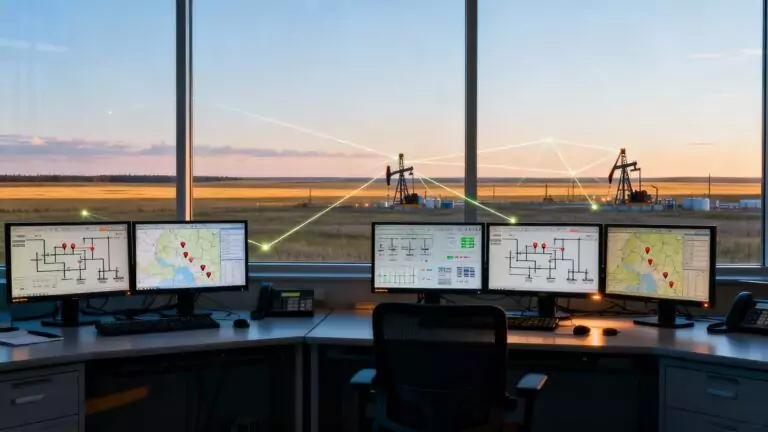You’re thinking about electrical design as a career path. Maybe you’re in school. Maybe you’re switching from a related field. Most people starting out feel this way.
You need to know what skills actually count. Not the textbook stuff. The real skills that separate employed designers from unemployed ones.
What skills do electrical designers need? Five core competencies define successful industrial electrical designers: a deep knowledge of electrical theory, including load calculations and power distribution; proficiency in industry-standard software platforms such as AVEVA Electrical; the ability to coordinate across multiple engineering disciplines; an understanding of construction and client requirements; and a commitment to continuous learning as technology evolves. Master these five areas and you’ll build a solid career foundation.
Basic computer-aided design skills won’t cut it anymore. Junior designers spend four years in school learning AutoCAD. They can’t handle an actual industrial project. Industrial electrical design demands more than drawing lines on a screen.
You need technical depth. Software expertise across multiple platforms. The ability to work with five other engineering disciplines on the same project. That last part? Harder than it sounds.
Skills vary wildly by industry sector. Petrochemical plants need different expertise than renewable energy facilities. Project complexity scales from small installations to massive facilities worth hundreds of millions.
Essential Technical Knowledge for Electrical Design Work
Basic technical skills separate designers who produce usable work from those who make pretty drawings. Real understanding counts. Not surface knowledge that falls apart under scrutiny.
Critical Electrical Theory Foundation
Load calculations set the system capacity. Equipment sizing. Get these wrong and everything downstream fails. Everything. These calculations establish power requirements for motors, lighting, HVAC systems, and process equipment.
Power distribution gets complicated fast in industrial settings. Facility size creates problems. Multiple voltage levels add complexity. Industrial systems span multiple acres. Voltage levels from 120V circuits to 13.8kV systems.
Voltage drop calculations are crucial when running cables hundreds of feet long. Run a 480V motor circuit 400 feet without checking voltage drop? That motor won’t start. Production stops. Everyone’s angry.
Grounding systems protect people and equipment. Grounding grids need design work. Ground resistance calculations come next. Bonding connections get specified. Mess this up? Safety hazards. Equipment damage. Potentially fatal accidents.
Single-line diagrams become your main communication tool. Also called one-line diagrams or SLDs. These show the electrical system architecture. Every major component. Every protection device. Senior engineers understand immediately. Clients too.
Code Compliance Reality
The National Electrical Code governs most North American projects. NEC for short. International projects follow IEC standards. Canadian projects reference CSA standards. You need to know which code applies.
Multi-jurisdiction projects get messy. Calgary follows one standard. Houston follows another. Muscat? Completely different. You can’t copy-paste designs between projects. Always blows up during permit review.
Nobody memorises the entire NEC. It’s 900+ pages. You learn where to look. How to interpret requirements. Which sections actually matter for industrial work.
Power Systems Design Requirements
Fault level calculations determine short circuit current. Thousands to tens of thousands of amperes in industrial facilities. This affects breaker ratings. Bus bar selections. Cable specifications. Underestimate fault current? You specify equipment that can’t safely interrupt faults.
In one reported case, a designer underestimated fault current by 50%. Specified breakers rated for 25kA. Actual fault current? 42kA. Had to replace every breaker. Cost the company significant money in equipment replacement and project delays.
Protective device coordination creates selectivity. When a fault occurs, only the nearest protective device should trip. Skip protection coordination? A small fault trips the main service disconnect. The entire facility goes dark.
Emergency power systems keep operations running during outages. Generators. UPS systems. Battery banks. Automatic transfer switches. Nothing focuses design attention like knowing lives depend on backup power working.
Software Platforms Every Industrial Designer Must Master
What software do electrical designers use? Industrial electrical designers primarily work with AVEVA Electrical for large, multi-discipline projects, AutoCAD Electrical for 2D schematics and control panels, and ETAP for electrical analysis, including short-circuit studies and arc flash calculations. AVEVA dominates major industrial work due to its database-driven approach and multi-discipline coordination capabilities. Learning these platforms thoroughly takes 6-12 months of dedicated practice.
Generic CAD skills won’t set you apart. You need specific platform expertise.
AVEVA Electrical as Industry Standard
AVEVA Electrical dominates large industrial projects. Not just drafting software, it’s a database-driven engineering environment that connects electrical design directly to other disciplines through shared project data. Vista Projects’ experience delivering electrical design drafting and E&I projects highlights how integrated data-centricA data-centric outlook is a core concept in digital project execution architecture where data is viewed as the most important and perpetual ... workflows reduce rework and improve project outcomes.AVEVA Electrical dominates large industrial projects. Not just drafting software. Database-driven engineering environment. Electrical design connects directly to other disciplines through shared project data.
Cable schedules automatically update when piping routes change. Load lists pull data from equipment specifications. Process engineers update equipment specs. Your electrical loads update automatically.
AVEVA Unified Engineering puts process, piping, electrical, instrumentation, and civil engineering in a shared 3D environment. Cable routing avoids clashes automatically. Equipment layouts account for electrical clearance from the start.
Vista Projects is an AVEVA Partner, with designers working on the newest versions. Asset Information Management capabilities provide comprehensive data packages that support operations and maintenance throughout facility lifecycles.
The Learning Curve
AVEVA Electrical learning curve is steep. Brutally steep. Expect six months before you’re genuinely productive. A full year before you’re comfortable with advanced features. Automated cable routing. Multi-disciplinary coordination tools.
Junior designers struggle with automated cable routing initially. Database errors can be confusing at first. Equipment that won’t snap to structure. Frustrating as hell.
But this investment pays off. Companies pay considerably more for AVEVA experience. Just survive the first six months.
Other Essential Tools
AutoCAD Electrical handles 2D schematic development. Control panel layouts. Schematic diagrams. Simpler projects. Once you’re doing multi-discipline coordination on a £40 million project? AVEVA becomes essential.
ETAP handles electrical analysis. Electrical Transient Analyser Programme. Short circuit analysis. Load flow studies. Motor starting analysis. Protection coordination. Arc flash calculations.
Learning Path Reality
Start with AutoCAD Electrical if you’re new. Build schematic projects. This foundation transfers to complex platforms.
Formal training in AVEVA is valuable when possible. Week-long courses are worth the investment. Self-teaching works but takes longer. Learning alone takes a year. Formal training cuts that to three months.
Portfolio development is important. Include different difficulty levels. Small control panels. Medium-sized distribution systems. Portions of larger facilities. Show calculations. Design notes. Your thinking process.
Companies want designers with platform experience already. They won’t spend months training from scratch. This frustrates everyone. That’s reality. Learn on your own time or face hiring challenges.
Multi-Disciplinary Collaboration for Project Success
Five or six disciplines work simultaneously on industrial projects. Your success depends on the quality of coordination. This either works smoothly or becomes a nightmare.
Cross-Discipline Dependencies
Process engineers define equipment power requirements. Motor horsepower ratings. Pump specifications. Control system power needs. These form the basis for electrical design.
Mechanical engineers select motors, fans, and compressors. Your motor control designs depend on their selections you make. Piping engineers route process piping. Your cable routing needs to avoid their pipe racks. Underground conduit conflicts with underground piping without early coordination.
Civil engineers design foundations and structures. Your electrical room locations need civil coordination. I&C engineers design control systems. Your electrical designs must power these systems. Signal cables must be separated from power cables.
Communication and Issue Resolution
Design review meetings happen regularly. You present decisions. Other disciplines question conflicts. You explain the rationale. Accept valid concerns professionally.
RFI management becomes a daily routine. Request for Information. From other disciplines. Construction teams. Clients. Similar questions arise in every project. Conduit routing conflicts. Equipment clearances. Grounding details.
Documentation practices are crucial. Design notes need clarity. Calculation packages. Specification sections. Poor documentation creates confusion and delays.
Data-centric platforms enable real-time coordination. When mechanical engineers change equipment locations, you see results immediately. Clash detection runs automatically. Front-end loading pays off. Extra time on early coordination reduces expensive changes later.
Client Requirements and Project Delivery Understanding
Most designers only produce drawings. Then wonder why careers plateau. Business understanding is essential. Client interaction affects project success. Project delivery knowledge makes you more valuable.
Owner-Direct vs. EPC Projects
Owner-operators hire firms directly. Projects happen at their facilities. You work closely with operations and maintenance teams. They care intensely about operability, maintainability, and long-term costs.
EPC contractors run large capital projects. Engineering, Procurement, and Construction firms. Turnkey delivery. More removed from end users. More emphasis on construction efficiency.
Owner-direct projects involve more client meetings. More design iterations. More attention to maintenance. EPC projects move faster. Tighter budgets. Owner-direct projects often provide better learning opportunities through operational input.
Managing Project Costs
Every design decision affects costs. Wire sizing. Conduit routing. Equipment selection. Panel locations. These differences commonly accumulate to meaningful percentages on large projects.
Total installation cost includes materials, labour, and construction overhead. Total Cost of Ownership extends beyond installation. Typically, 20-30 years for industrial plants. Operational costs often exceed initial capital costs by considerable factors.
Design for lifecycle costs. Equipment vendors often quote high initially. Transformer quotes can vary significantly between vendors for identical specifications. Shop around.
Construction Support
Design doesn’t end when drawings get issued. Construction teams have questions. Submittals need review. Field conditions differ from assumptions.
RFI responses need a quick turnaround. Submittal review confirms contractor-purchased equipment matches the specifications. Commissioning validates that installed systems work as designed.
Advancing Technology Skills for Career Growth
The industry’s changing. Digital transformation, sustainability initiatives, and automation create new skill requirements. These become differentiators for advancement.
Digital Transformation and Asset Management
Asset information management extends beyond traditional deliverables. Data packages supporting operations, maintenance, and future modifications.
Digital twin concepts link physical assets with digital representations. Real-time monitoring. Used for operational monitoring. Predictive analytics. The technology works when implemented properly.
Cloud-based platforms enable distributed teams. Projects span multiple offices and time zones. Real-time design data access becomes standard.
Sustainable Energy Systems
Carbon capture facilities have unique electrical needs. Renewable energy changes the distribution system design. Solar, wind, and battery storage introduce bidirectional power flow. Facilities both consume and generate electricity. Protection schemes must account for generation.
Energy efficiency becomes a design criterion. Variable frequency drives. High-efficiency motors. LED lighting. Smart controls. These reduce operating costs and support sustainability goals.
Industrial IoT and Smart Systems
IIoT sensors generate massive data streams. Your designs need to support network infrastructure. Edge computing devices. Communication systems.
Smart sensors need power and communication simultaneously. Edge computing needs reliable power with backup. Cybersecurity considerations affect control system design. Network segmentation. Secure protocols. Physical security.
Professional Development and Career Progression
How long does it take to become an electrical designer? The career path typically spans: 0-3 years as a junior designer learning fundamentals and software proficiency, 3-7 years as an intermediate designer managing small to medium projects independently, 7-15 years as a senior designer leading complex projects and mentoring staff, and 10+ years as a lead designer managing teams and setting technical direction. Educational requirements include an engineering degree or technical diploma, though advancement to senior levels often requires professional engineering licensure (P.Eng. or PE).
Skill development continues throughout careers. Understanding progression helps with strategic development.
Career Stages and Responsibilities
Junior Designers (0-3 years) focus on fundamentals. Drawing production. Basic calculations. Software proficiency. Drawings come back marked up constantly. That’s normal. You’re building foundation skills.
Most of what you learned in school? Only partly useful. Load calculations get used regularly. That obscure transformer connection? Rarely encountered in practice.
Intermediate Designers (3-7 years) work more independently. Managing small to medium projects. £400,000 to £4 million budgets. Calculations without constant oversight. Coordinating directly with other disciplines.
Senior Designers (7-15 years) lead complex projects. Projects exceeding £8 million. System architecture decisions. Mentoring junior staff. Client interaction. Technical depth lets them solve problems others can’t.
Lead Designers (10+ years) manage teams. Set technical direction. Maintain quality across multiple projects. Professional development of staff. Company standards. Client relationships.
Advancement happens based on demonstrated capability. Not just time served.
Certifications and Continuing Education
Professional Engineer licensure is valuable. P.Eng. in Canada. PE in the United States. Requirements include an accredited engineering degree. 4-5 years of supervised experience. Professional practice exam.
Software certifications show expertise. AVEVA offers programmes. AutoCAD has certifications. Real project experience is more valuable, though. Three years of actual AVEVA work beats certification with six months of experience.
Specialised training in hazardous area design is valuable. Arc flash analysis is increasingly needed. Renewable energy systems show growing demand. Professional society involvement keeps you connected. IEEE has industrial application chapters.
Salary Expectations and Market Value
How much do electrical designers make? The salary of an industrial electrical designer varies significantly by experience and location. Studies suggest that junior designers typically start around £45,000-£55,000 in the UK market or $55,000-$70,000 in North American markets. Intermediate designers with 3-7 years of experience typically earn £60,000-£75,000 or $75,000-$95,000 annually. Senior designers with 7-15 years of experience often earn £80,000-£105,000 or $100,000-$130,000 or more, depending on their specialisation, market, and employer type. These ranges shift dramatically based on location, cost of living, and industry concentration.
Industry networking is more important than you think. People hire people they know. Attend engineering society meetings. Connect with alumni. Build vendor and contractor relationships.
Portfolio development should be ongoing. Document projects. Skills developed. Software mastered. Stay current with technology trends. Industry evolves constantly. Designers who don’t keep learning become obsolete.
Building Your Career Foundation Now
You’ve seen the complete framework. Essential technical knowledge anchors everything. Software proficiency affects productivity. Multi-disciplinary collaboration affects project success. Client understanding makes you more valuable. Advancing technologies shape future opportunities.
Becoming highly competent takes years. But rewards justify the investment. Your work supports energy infrastructure, industrial productivity, and sustainability initiatives.
Assess where you are currently. Identify gaps between your skills and this framework. Prioritise development based on career goals. Take action through formal education, software training, internships, and entry-level positions that provide practical experience. If you’re just getting started, understanding how to become an electrical designer gives you a clear roadmap to follow from junior roles to senior-level expertise. Assess where you are currently. Identify gaps between your skills and this framework. Prioritise development based on career goals. Take action through formal education. Software training. Internships. Entry-level positions provide practical experience.
Vista Projects’ multi-disciplinary approach across Calgary, Houston, and Muscat shows modern design work. Truth-based methodology. Collaborative problem-solving. Forty-year track record demonstrating engineering excellence. This industry rewards continuous improvement and technical depth.
Electrical designers are essential to industrial digital transformation and the sustainable energy transition. Your skills will shape how facilities operate for decades. Start building them now.
Disclaimer: This analysis is for informational purposes only and should not be considered career or employment advice. Engineering roles, requirements, compensation, and career paths vary significantly by location, employer, and market conditions. Salary figures represent general industry ranges, and individual compensation varies widely based on geographic market, specialisation, employer type, and negotiation. Educational requirements and licensure pathways differ by jurisdiction. Always consult current professional associations, licensing boards, and employers for accurate, up-to-date information specific to your situation.

